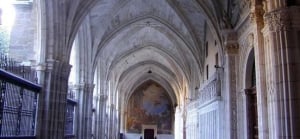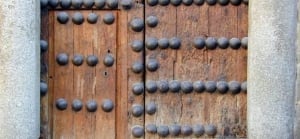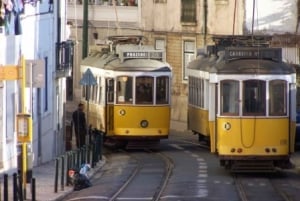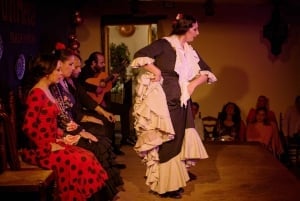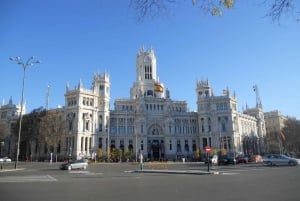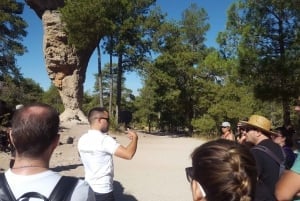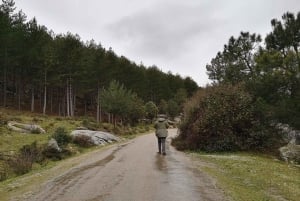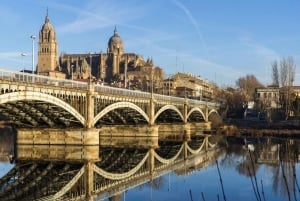Toledo
The city of the three cultures
Toledo was Christian from the fourth century onwards, as it was part of the Roman Empire, and for centuries it kept the same faith and culture under Visigoth rule. Although there were hard fought arguments against pagan influx known as Arrianismo, even under Muslim rule the people of Toledo never lost their Christian faith.
In the seventeenth century Toledo had about seventy Christian religious buildings allocated for different uses, like schools, hospitals and charity houses. The Santa Justa and Rufina churches are the oldest ones in Toledo.
The urban style of Toledo is mainly Arab: narrow streets, houses that almost touch their roofs, windows never being in front of others, and elaborate inside patios with an abundance of green, tiles, and water fountains. Two mosques out of the dozen that were built still exist: the churches of Cristo de la Luz and Tornerías.
The major mosque was located where a cathedral is today, but it is said that it wasn’t a very impressive building, just a very spacious place for everyone to pray.
The town once had its own wall that separated the noble area (including the palace and other important buildings) from the rest of the city in the area where the Holy Cross museum and the Alcazar are located. It is believed that in the south of the city beside the dyer industries the great astronomer Azarquiel built a legendary clock and an aquatic calendar.
The Alfonso VI, the old bisagra, the Vado, the Alcantara and the twelve-edge gates have an Arab structure. The wheel on the bank of the river Tajo is also of Arab heritage. The Arab influence is especially found in the Mudéjar style in architecture and decoration using bricks, masonry, linked arches, wooden roofs and rich plasterworks. The two existing synagogues gave the name to the neighborhood of the Jewish quarter, where it’s believed there was a majority Jewish population. Once, the city used to have about ten synagogues. The neighborhood limits stretched out to Cambron gates. Close to the Jewish gate there are still several houses possessing the remains of the ritual cellar baths, called mikwa.
Commerce was the main activity of the Jewish people, who used to live directly above their workshops. At that time the Jewish lived inside and out of the Jewish quarter.
The city of Toledo, located in the heart of Spain about 70 Km to the south of Madrid, was declared a World Heritage site by UNESCO in 1986. Toledo is to Spain as Kyoto is to Japan.
It’s a unique city based on a headland rock, embraced and surrounded by the largest river in Spain: the Tajo. Toledo is a millennium city where three cultures from the three single faith religions (Muslim, Hebrew and Christian) left their imprints, where three ways of understanding the world were melted into a perfect mix. It bore special witness to the legacy of all the people who formed Spain and its ancient history.
Toledo was the capital of the Spanish empire at the time of the Emperor Carlos I, and it still maintains the charm and style from centuries ago, making it a unique and different place to visit. It is steeped in history in every alley, under every paving stone, in every building, and behind every corner. Its unique artistic heritage is palpable on a walk in the area. Churches, synagogues, convents, the city wall, bridges, and towers all make Toledo an endless walking museum perfect for getting lost among its narrow and charming streets.
In some sense Toledo is synonymus with art. In Toledo, art and painting, thanks to El Greco, were intimately linked. Here he lived and worked until he died, and this is where he produced his best paintings. The people from Toledo were the models for his religious paintings and portraits.
World heritage
In 1986 the millennium city of Toledo was placed on the Official World Heritage List thanks to its "Cultural Assets." This includes its landscapes, its geographic setting, the river, the Cigarrales orchards, las Vegas low lands, and its observation points (La Granja, Virgen de Gracia, Santa Leocadia, San Cristóbal).
The city of Toledo is located on an elevated land of granite rock, gripped by the river Tajo which surrounds the entire city, except on the north where the city joins the Castile plateau.
El Greco and Toledo
El Greco, Domenici Theotocopoulos, was born in Crete in 1541. In his youth he painted Orthodox icons and then traveled to Venice where he learned from the great masters Tintoretto, Veronese and Bassano. From there he continued to Rome before he definitively settled down in Spain in 1575 with the purpose of working on paintings for the new Monastery of El Escorial. However, his paintings were not of King Philip II’s liking, who believed that works such as El Martirio de San Mauricio and the "tropas tebanas" did not invite people to pray. This forced him to find new projects in Toledo with the aid of his friend, the dean of the cathedral.
He first painted the three altars for the Santo Domingo convent and Christ’s Resurrection for the San Ildefonso convent. Next he was instructed to paint El Expolio for the altar of the cathedral sacristy. At that time the work was very controversial due to its depiction of Jesus as a superhuman, dressed in a robe of bright red instead of as a tortured, stripped, publicly humiliated human suffering pain.
Another one of his famous paintings is El Entierro del Conde de Orgaz for the Saint Joseph chapel.



